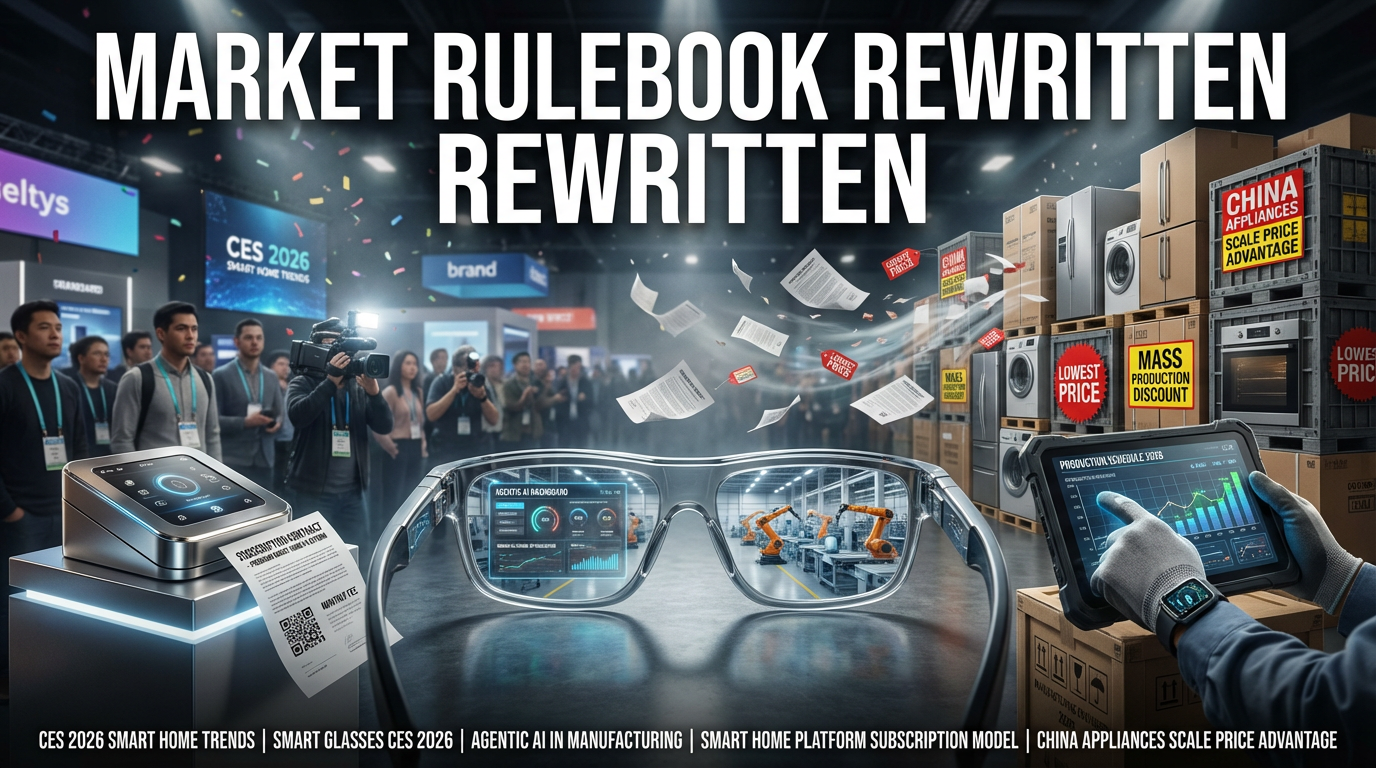Okay, let's dive right in.
1. Market Trends
S&P 500 Outlook for 2025
- The S&P 500 has seen approximately a +25% increase over the past two years (2023, 2024). This is unusual, but related to the rise cycle of innovative technologies like AI.
- S&P 500 Index Forecast for 2025:
- If interest rates remain at 4%, the index could rise to around 7,300.
- If interest rates increase to 5%, the index is projected to reach approximately 6,500.
- Even in a high interest rate environment, a 10% increase is still expected.
Interest Rates and Market Impact
- While an increase in long-term interest rates can lead to market value declines, at a reasonable level (4-4.5%), the market could see steady growth.
- AI and high-growth technology sectors are likely to be less affected by interest rate changes.
2. Tech Stocks vs Small Caps: Investment Choice
Performance to Date
- Based on 2023 performance:
- NASDAQ 100: Increased by over +30%.
- Russell 2000 (Small Caps): Increased by approximately +10%.
- Consequently, the NASDAQ 100 achieved a 3x higher return than small caps.
2025 Outlook
- Small Cap Outlook:
- The Russell 2000's actual PER (Price-to-Earnings Ratio) is about 26x, higher than the S&P 500's roughly 22x. This suggests that small caps are "slightly overvalued."
- Expected profitability isn’t significantly different from the S&P 500 (around 14%).
- NASDAQ/AI Sector:
- The NASDAQ 100's PER is about 26.4x, also high, but its growth rate is more attractive at about 22%.
- "The Magnificent 7" (key tech companies like Apple, Amazon) possess strong margin rates and high expected returns, securing a competitive edge compared to other indexes.
3. Investment Strategies and Bullish Sectors
AI and Technological Growth
- The AI growth cycle isn’t over. It's currently similar to the Internet boom (late 1990s), with new market leadership potentially lasting about 10 years.
- AI-related companies still have high expectations, and investment focus should be on AI-related industries.
Bullish Sectors: Software and Semiconductors
- Software:
- Expected to see the biggest margin improvement due to AI (5.2%p).
- The Software ETF (IGV) has risen 135% in the last two years and is anticipated to continue its bullish trend.
- Semiconductors:
- Historical precedent: during the Internet of Things (IoT) cycle from 2010-2020, both semiconductors (SOX) and software recorded approximately a 30% increase.
- Semiconductors and software are not substitutes but rather "a mutually complementary growth relationship."
Investment Timing
- Keep an eye on both hardware and software.
- Focus on the growth potential of global tech players mapped to AI.
Conclusion: 2025 Investment Summary
- Investors should focus on interest rate trends, the AI growth cycle, and NASDAQ 100/AI-related stocks.
- Particularly, it is necessary to plan a balanced portfolio by considering both the semiconductor and software sectors.
- Crafted by Billy Yang
[Related articles at NextLens.Net]
*YouTube Source: [유동원의 성공투자]
– 2025 Investment Guide: AI software vs.Chips? Big Tech vs. Small Caps?

1. What is Year-End Tax Settlement?
Year-end tax settlement is the process of recalculating the taxes that an employee has paid over the course of a year. If they have overpaid, they receive a refund, and if they have underpaid, they have to pay the difference. It's an important annual event for many salaried workers, often called the "13th-month salary."
2. Income Deductions and Tax Credits We Need to Know
- Income Deduction: This is a way to reduce taxable income by deducting a certain amount, with the refund amount varying depending on the tax rate.
- Tax Credit: This directly reduces the tax amount, making it much more straightforward and with a fixed credit amount.
Year-End Income Deduction Strategies: What Should You Do?
Although there are many income deduction items, the things you can actually do to make last-minute adjustments are more limited than you might think. Let's go over the most important ones.
1) Credit Card and Debit Card Income Deductions
-
Basic Calculation:
Deductions are available for amounts exceeding 25% of your annual salary. For instance, if your annual salary is 40 million KRW, deductions apply from the amount exceeding 10 million KRW. -
Deduction Rates:
- Credit Card: 15%
- Debit Card, Cash Receipts: 30%
- Public Transportation, Traditional Markets: 40% (Additional Deduction Items)
Looking at the deduction rates, debit cards are more beneficial. However, many reach their annual deduction limit (up to 3 million KRW) with credit cards alone, so you should consider your spending patterns when making your choice.
-
Tip:
A clear way to boost deductions at the end of the year is to take advantage of additional deduction items, like using public transport, shopping at traditional markets, and engaging in cultural activities (pre-booking books, performances, and movies).
2) Youth Savings Fund
This is the hottest choice this year.
-
Eligibility:
Individuals aged 15-34 (up to 39 years old, excluding military service period). -
Benefits:
- A 40% income deduction on a maximum annual contribution of 6 million KRW.
- That's an income deduction of up to 2.4 million KRW.
-
Pro Tip:
- If you sign up and pay 6 million KRW in a lump sum by the end of December this year, you can immediately receive the benefit this year.
- However, you can only sign up at designated branches, so head to your nearest brokerage firm immediately.
3) Other Income Deduction Items to Check
The items you can directly manage include:
- Jeonse (Key Money) Loan: A 40% income deduction on principal and interest payments (up to 4 million KRW).
- Housing Subscription Savings: A 40% income deduction on a maximum annual deposit of 3 million KRW.
If you have both housing subscription savings and a Jeonse loan, the deduction limits are combined, so calculate your usage.
What Tax Credits Can You Claim Before the End of the Year?
Unlike income deductions, tax credits have fixed refund amounts, making them easier to understand.
1) Donations Tax Credit
Donations, even small ones, have high tax credit rates.
- Up to 20 Million KRW: 15% Credit
- Over 20 Million KRW: 30% Credit
Consider priority areas such as churches, schools, and social organizations.
2) Pension Savings and Individual Retirement Pension (IRP)
-
Deduction Limit:
- A maximum annual contribution of 7 million KRW combined for personal IRP + pension savings.
- Tax credit of 16.5% or 13.2% of the contribution amount.
-
Tips:
- If you haven't reached this year's limit yet, make additional payments by the end of December.
- There are substantial penalties for early termination, so sign up only if you're confident about maintaining it long-term.
3) Monthly Rent Tax Credit
If you're renting, you must check this item.
- You can receive a 10-12% tax credit on monthly rent payments (up to 7.5 million KRW annually).
- Prepare your lease agreement and monthly payment records to confirm eligibility.
Conclusion
Year-end tax settlement is a process of organizing your consumption and investments of the past year and maximizing the benefits provided by the government.
If you take action focusing on the key items mentioned in this article, you can receive a more substantial 13th-month salary.
Finally, carefully review various items, and use the year-end tax settlement preview function on HomeTax to develop the optimal strategy based on your situation.
- Crafted by Billy Yang
[Related Articles at NextLens.Net]
- Income Deduction, Now Smartly with the Youth Savings Fund!
- How to Use Pension Savings, The Secret of the 13th-Month Salary
*YouTube Source: [Jun’s economy lab]
– 며칠 안 남았습니다 빨리해서 월급 돌려받으세요(ft.박곰희 1부)

[Korean Summary]
[유동원의 성공투자]
“2025 Investment Guide: AI software vs.Chips? Big Tech vs. Small Caps?“
1. 시장 동향
S&P 500의 2025년 전망
- 최근 2년(2023, 2024) 동안 S&P 500은 약 +25% 상승률을 기록함. 이는 드물지만 AI와 같은 혁신 기술의 상승 주기와 관련이 있음.
- 2025년 S&P 500 지수 전망:
- 금리가 4%로 유지된다면 지수는 약 7,300까지 상승 가능.
- 금리가 5%로 오른다면 지수는 약 6,500이 예상됨.
- 금리가 높은 상황에서도 10%의 상승률은 기대 가능.
금리와 시장 영향
- 장기 금리의 상승은 시장 가치 하락을 야기하지만, 적정선(4~4.5%)에서는 시장의 꾸준한 성장 가능.
- AI 및 고성장 기술 부문은 금리 변화의 영향을 덜 받을 가능성이 있음.
2. 기술주 vs 스몰캡: 투자 선택
현재까지의 성과
- 2023년 성과 기준:
- 나스닥(NASDAQ 100): +30% 이상 상승.
- 러셀 2000 (Small Caps): 약 +10% 상승.
- 결과적으로 나스닥 100이 스몰캡보다 3배 높은 수익률을 기록.
2025년 전망
- 스몰캡의 전망:
- 러셀 2000 지수의 실제 PER(주가수익비율)은 약 26배로, S&P 500의 약 22배보다 높은 상태. 이는 스몰캡이 "약간 고평가" 상태임을 시사.
- 예상 수익성도 S&P 500과 큰 차이는 없음(14% 수준).
- 나스닥/AI 섹터:
- 나스닥 100의 PER은 약 26.4배로, 역시 높지만 성장률은 약 22% 수준으로 더 매력적.
- "The Magnificent 7(애플, 아마존 등 핵심 테크 기업)"의 강력한 마진율과 높은 기대수익률은 다른 지수 대비 경쟁우위 확보.
3. 투자 전략과 강세 섹터
AI와 기술 성장
- AI의 성장 주기는 사라지지 않음. 현재 인터넷 붐(1990년대 말)과 비슷한 양상, 새로운 시장 주도 약 10년 지속 가능.
- AI 관련 기업은 여전히 기대치가 높고, 투자 초점은 AI 관련 업종에 맞춰야 함.
강세 섹터: 소프트웨어와 반도체
- 소프트웨어(Software):
- AI로 인해 가장 큰 마진 향상 예상(5.2%p).
- 소프트웨어 ETF인 IGV는 지난 두 해 동안 135% 상승 및 앞으로도 지속적인 강세 예상.
- 반도체(Semiconductor):
- 과거사례: 2010~2020년 사물인터넷(IoT) 주기 동안 반도체(SOX) 및 소프트웨어 모두 약 30% 상승률 기록.
- 반도체와 소프트웨어는 대체재가 아니라 "서로 상호 보완적인 상승 관계".
투자 타이밍
- 하드웨어와 소프트웨어를 모두 주시.
- AI와 맵핑된 글로벌 기술 플레이어를 중심으로 성장 가능성 주목.
결론: 2025 투자 요약
- 투자자는 금리 동향, AI 성장 주기 및 나스닥 100/AI 관련주에 초점을 맞춰야 함.
- 특히 반도체와 소프트웨어 섹터를 동시에 고려하여 균형 잡힌 포트폴리오 계획 필요.
- Crafted by Billy Yang
[관련글 at NextLens.Net]
- AI Investment Strategies in 2025
- Tech Stocks vs Small Caps: 2025 Outlook
*유튜브 출처: [유동원의 성공투자]
[전인구경제연구소]
“며칠 안 남았습니다 빨리해서 월급 돌려받으세요(ft.박곰희 1부)“
연말정산은 근로자가 1년 동안 낸 세금을 다시 계산해서 더 냈으면 돌려받고, 덜 냈으면 추가로 내는 절차를 말해요.
많은 직장인들에게는 13월의 월급이라고도 불리는 만큼 중요한 연례 행사죠.
2. 우리가 알아야 할 소득공제와 세액공제
- 소득공제: 소득에서 일정 금액을 차감해주는 방식으로, 세율에 따라 환급되는 금액은 달라요.
- 세액공제: 세금 자체를 직접적으로 줄여주는 방식으로, 훨씬 직관적이고 금액이 확정적이에요.
소득공제 막판 전략, 뭘 해야 할까?
소득공제 항목이 여러 가지가 있지만, 막판 뒤집기를 하려면 실질적으로 할 수 있는 것들은 생각보다 제한적이에요.
이제 그중에서 중요한 것들만 설명해볼게요.
1) 신용카드 및 체크카드 소득공제
-
기본적인 계산:
연봉의 25%를 초과한 금액부터 공제가 가능해요. 예를 들어, 연봉이 4천만 원이라면, 1천만 원을 초과한 금액부터 적용된다는 거죠. -
공제율:
- 신용카드: 15%
- 체크카드, 현금영수증: 30%
- 대중교통, 전통시장: 40% (추가적 공제 항목)
공제율만 보면 체크카드가 유리하죠. 하지만 신용카드만으로도 연간 공제 한도(최대 300만 원)가 차는 경우가 많기 때문에, 자신의 소비 패턴을 살펴보고 선택해야 해요.
-
팁:
명확하게 할 수 있는 건, 연말에 대중교통비 결제나 전통시장 쇼핑, 문화 활동(책, 공연, 영화를 미리 예매) 같은 추가 공제 항목을 활용하는 거예요.
2) 청년형 소장펀드
올해 가장 핫한 선택지가 이거예요.
-
대상:
만 15~34세(병역이행 기간 제외 시 최대 39세까지 가능). -
혜택:
- 1년에 최대 600만 원을 납입하면, 40% 소득공제가 가능해요.
- 즉, 최대 240만 원까지 공제 가능.
-
꿀팁:
- 올해 12월 말까지 가입하고 바로 600만 원 일괄 납입하면, 올해 혜택을 바로 받을 수 있음.
- 단, 지정된 지점에서만 가입 가능하니 바로 가까운 증권사로 뛰어가세요.
3) 기타 소득공제 항목 살피기
다른 항목 중 직접 관리 가능한 것들은 다음과 같아요:
- 전세자금대출: 원리금 상환액의 40% 소득공제(최대 400만 원).
- 청약저축: 1년에 최대 300만 원 납입 시 40% 소득공제 가능.
만약 청약저축과 전세자금대출을 모두 이용 중이라면 공제 한도를 합산해서 적용받게 되므로, 활용도를 계산해보세요.
그럼 올해 끝나기 전에 더 챙길 수 있는 세액공제는?
소득공제와 달리 세액공제는 환급 금액이 확정적이어서 더 쉽게 접근할 수 있어요.
1) 기부금 공제
기부금은 소액이라도 세액공제율이 높아요.
- 2천만 원 이하: 15% 공제.
- 2천만 원 초과: 30% 공제.
특히 교회, 학교, 사회단체 같은 우선순위 분야도 고려해보세요.
2) 연금저축 및 IRP(Individual Retirement Pension)
-
공제 한도:
- 개인형 IRP + 연금저축을 합쳐 연간 700만 원까지 납입 가능.
- 납입금의 16.5% 또는 13.2%를 세액공제.
-
팁:
- 올해 한도를 아직 채우지 않았다면, 12월 말까지 추가 납입하세요.
- 중도 해지 시 페널티가 크니, 장기간 유지할 자신이 있을 때만 가입하세요.
3) 월세 세액공제
월세를 살고 있다면 무조건 확인해야 할 항목이에요.
- 월세 비용의 10~12%를 세액공제 받을 수 있어요(연간 최대 750만 원).
- 공제 대상 여부를 확인하려면 임대차계약서와 월세 지급 내역을 꼼꼼히 준비하세요.
결론
연말정산은 한 해의 소비와 투자를 정리하고, 국가에서 주는 혜택을 최대한 누리는 과정이에요.
이번 글에서 말한 주요 항목을 중심으로 행동에 옮기면, 조금 더 두둑한 13월의 월급을 받을 수 있을 거예요.
마지막으로, 이런저런 항목들을 꼼꼼히 살피고 홈택스의 연말정산 미리보기 기능도 활용해서 개인 상황별 최적 전략을 세워보세요.
- Crafted by Billy Yang
[관련글 at NextLens.Net]
- 소득공제, 이제는 청년형 소장펀드로 똑똑하게!
- 연금저축 활용법, 13월 월급의 비밀
*유튜브 출처: [Jun’s economy lab]


